Have you thought about the design of your classroom library lately? Were you intentional when you set up the library? Do your students use your classroom library? Maybe you don’t have a classroom library yet!
If you answered no to any (or all!) of these questions, you are in luck! Even if you are nearing the end of the school year, now is the perfect time to think more intentionally about your ultimate classroom library.
In today’s post, I will give step-by-step guidance to help you design your dream classroom library! There are two things I want you to think about first:
- What kind of library environment do you want?
- How will you introduce that environment to your students?
A classroom library is about much more than just the books and how they are organized. Although important, I want you to think beyond the basics and really envision the classroom library of you and your student’s DREAM!
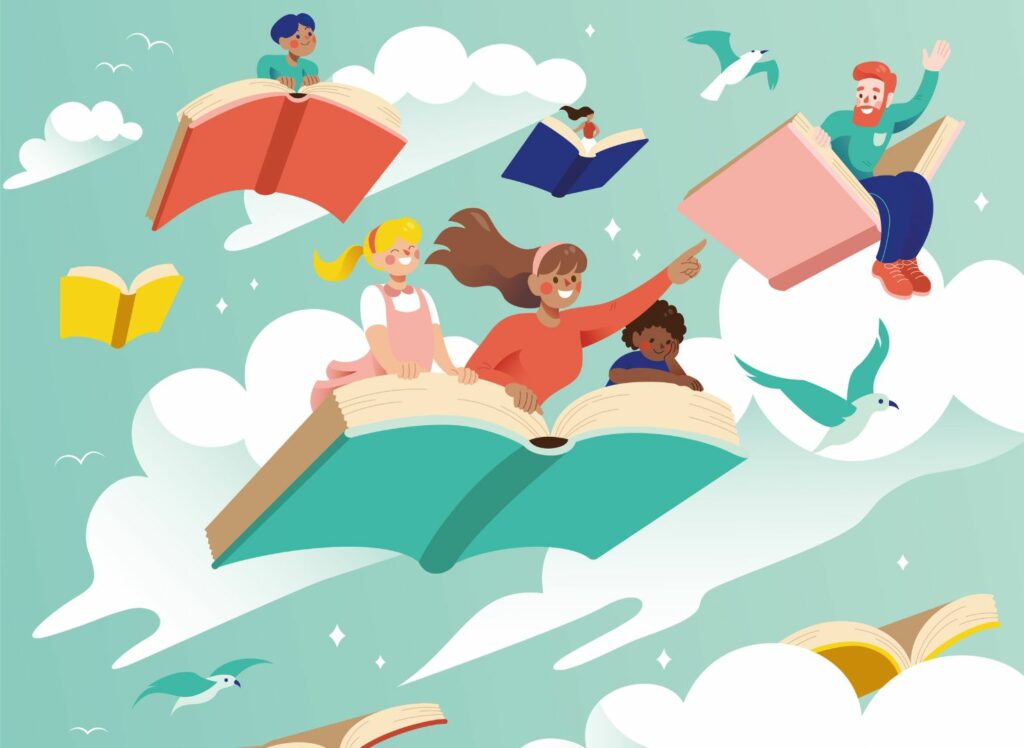
Building the Classroom Library of Your Dreams
Label, label, label!
Labeling the books and the shelves in your classroom library is the first thing I like to consider. There are so many options, and whatever you choose should be easy (and effective) for you and your students!
Ideas for labeling:
- Color-coded sticker on the spine
- Sticker/label on the cover or back
- This could be a label/sticker on the inside/front cover
I suggest labeling both the books and shelves/sections in your classroom library to help your students better understand how to locate the books they want to read and return them to the correct space for the next reader.
If your system isn’t set up in a way that is simple for students to return the books to the right place, your dream classroom library will soon become one of nightmares. So, taking the time to think through this step and establishing an easy method for you and your students is so helpful!
Spines Out vs. Bins
Whether the books in your classroom library are shelved traditionally (spines out) or placed in bins really comes down to personal preference. But I also want to share some things I learned from my classroom library experiences!
If the books are on the shelves with their spines out, students can easily see every book that is available to them! This can help them find books more quickly, but it also allows them to see ALL their options instead of simply pulling the first book they see from a bin.
Not to mention . . . if we want to encourage our students to become lifelong readers, they will find themselves in public libraries, school libraries, and bookstores! Where the books are shelved spines out by author, genre, etc.
If you do decide to use bins, I have a few suggestions:
- Take the time to label the bins clearly.
- Teach your students how to use the bins correctly (and practice!)
- Create a “return bin” where students can put finished books. Then you can have a classroom job for your students to shelve the books once a week!
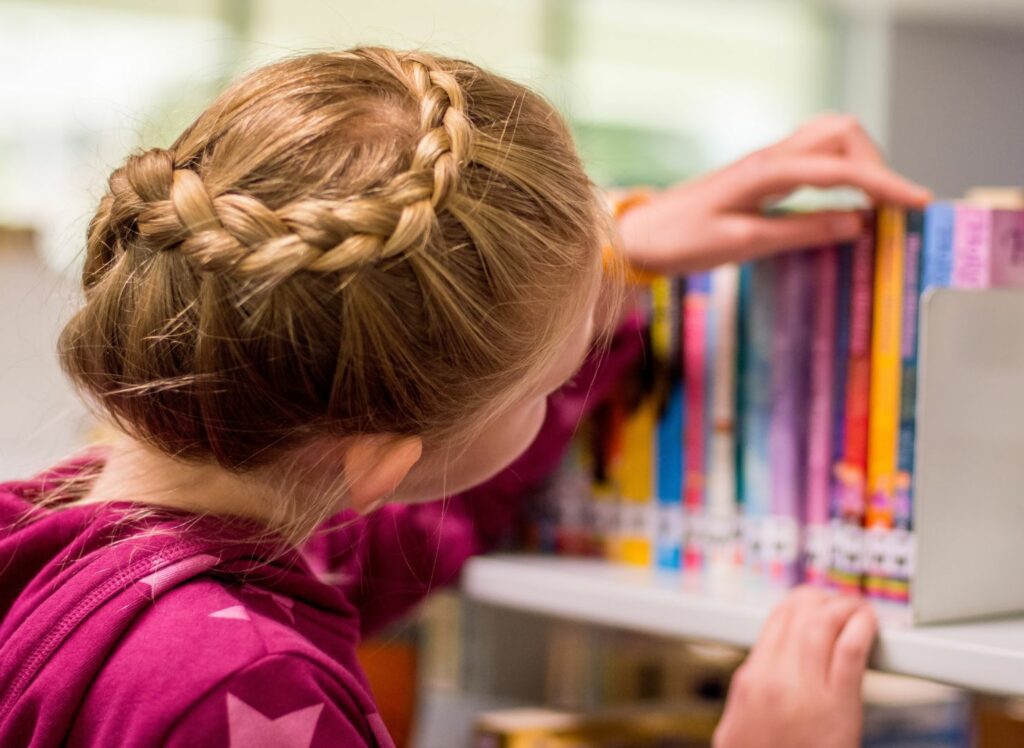
Importance of Inventory
Your dream classroom is going to be amazing to plan and many of the parts are going to feel a lot more fun and glamorous than this next step. . .
Unless you love organizing and creating systems, like me! Inventorying ALL of your books may seem like a lot of work, and it is, but it is also beneficial.
Ideas for inventory:
- Make a spreadsheet that has as many categories as your heart desires! Book title, author, genre, reading level, part of a series, topic-related, etc.
- Have a searchable tool you and/or your students can use to help them look for books. Using Google Sheets or a program your students could also have access to would be ideal.
- Have a volunteer inventory all of your books for you! You could ask a parent or former student to help you tackle this big task.
Books on Display
One thing I loved about having a classroom library and a designated space to encourage reading was the ability to display featured books! I found a lot of joy in choosing books connected to what we were learning in the classroom or books I knew my students would love and then displaying them for all to see.
Ideas for displaying:
- A small space on the top of your library shelves to place a book or two on a stand – covers facing out!
- Window shelves – if you are lucky enough to have a window in your classroom! I loved grabbing a set of clear acrylic baskets/shelves with suction cups and throwing a few featured books there! When I had the time, I would create fun little posters to hang alongside them that talked about the theme/author/book.
- Magnetic shelves work great too! You could display a book or two on your classroom’s magnetic bulletin board/whiteboard.
Here are a few ideas on for choosing your featured books:
- Highlighting books from a different genre each month.
- Books for an author study
- Books students have shared during book talks
- Books that are related to current events, seasons, or holidays
- Books that classmates have recently read and loved
- Books that are new to your classroom
If rotating the display becomes too much for you, don’t hesitate to give this task to students too!
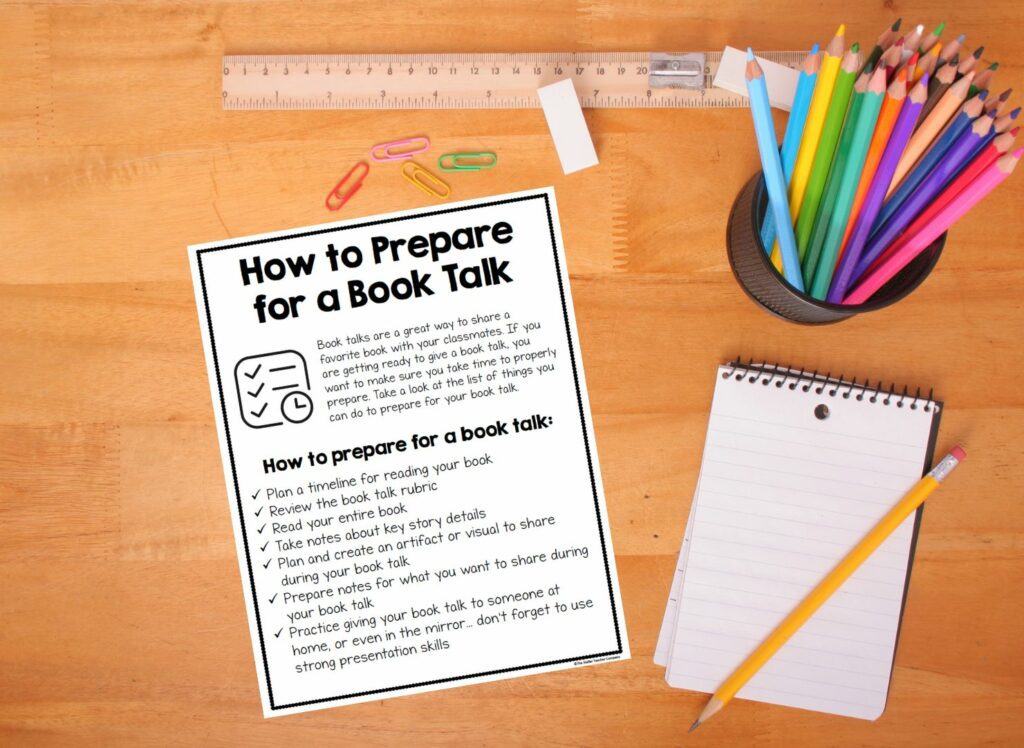
Visuals
Don’t forget to spruce up your classroom library with anchor charts or posters. These could be inspirational, educational, or a mixture of both.
Ideas for visuals:
- Reading genre posters
- Library terms word wall (author, title, genre, series, illustrator, etc.)
- Library expectations
- Library procedures
- Visuals of how the shelves should look vs. not
- Quotes from books
- Quotes from authors
- A space for students to leave quick sticky note reviews
Best Practices for Your Classroom Library
These are the five key things to consider when creating your dream classroom library! Now that you have a vision and system for your classroom library, let’s talk about how you will introduce the space to your students.
Launching a reading workshop in the first 3 weeks of school is a great way to start the school year! You establish routines and expectations and ensure your students are building habits and behaviors that set them up to be successful readers.
A few lessons could (and should!) be focused on your classroom library!
Things you want to make sure your students know and understand right away are:
- How your library is organized.
- When they can check out books.
- How long they can keep books.
- When and how they should return books.
- How long they should take to browse/look for books.
In addition to the objective listed above, you should also plan on doing a mini-lesson on every element of your classroom library (labeling, inventory, display, etc.)
The reason I say this is because if you spent all that time setting up your dream classroom, it deserves the time it will take to help your students understand how to use it and why it is an important space in the classroom.
Some ideas for your mini-lesson:
- If your books are placed on shelves with their spines out, do a mini-lesson explaining WHY they are organized. Explain how students can use that system to find the exact book they want… and how it will help them return books when they finish reading.
- If you use bins to store your books, teach students how to pull out a bin to look for all the books in that bin vs. just looking at the first few books at the front of the bin.
- If you have a featured book section in your library, explain to students what that is, why it’s important, how often it will change, etc.
- If you have an inventory spreadsheet for your books, show your students how to use it to find the books they are interested in.
- If you have anchor charts, posters, labels, or a word wall in your library, explain to students why those things are posted on the wall and why they are significant enough to take up precious wall space.
- Other ideas: book hospital, book review section, book talk how-tos, request list, etc.
A good rule of thumb is, whatever element you add to your library, plan at least ONE lesson to explain to your students.
As teachers, we often assume that our students will understand everything we post/have in our classrooms. However, we must remember that our students are kids. They may need to be more familiar with best practices for using a classroom library.
For this reason, it’s crucial to teach our students how to use our classroom libraries effectively. While it may be challenging to fit all of these lessons into the first week of school, it’s important to remember that teaching these skills is ongoing. We should continue to have conversations with our students about library use and organization throughout the school year.
If you’re feeling overwhelmed by all the ideas and suggestions presented in this article, don’t worry! Pick just one thing to try with your classroom library next year.
Once you’ve mastered that element, add in another. Teaching is a career-long process, and there’s no rush to create the classroom library of your dreams. Take your time and enjoy the journey of growth and development.
Grab Your FREE Gift!
Literacy Block Sample Schedules
Do you ever feel like you don’t have enough time to teach reading the way you want? This planning guide and set of sample schedules will give you tons of ideas for how you can set up your reading block regardless of how much time you do (or don’t) have.
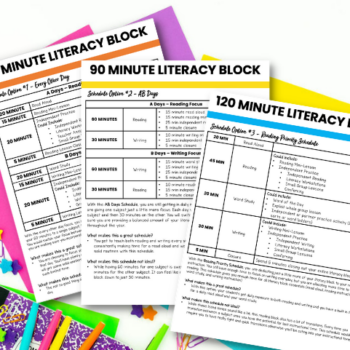
Think about your next steps…
- Check out this my post about Teaching Ecosystems: 5 Must-Have Mentor Texts for Your Science Unit to read about a handful of books you will definitely want in your classroom library.
- Join us inside The Stellar Literacy Collective, where you will get access to a resource library filled with reading and writing resources that you can use to help your students become more confident readers, and ultimately use your classroom library to its fullest potential!
Happy Teaching!

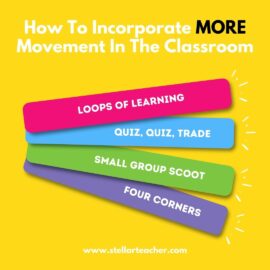
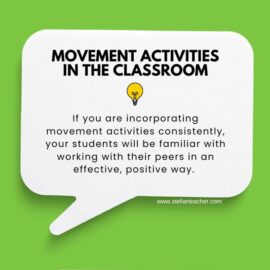
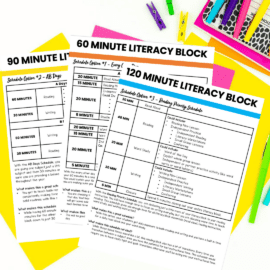









Leave a Comment
You must be logged in to post a comment.